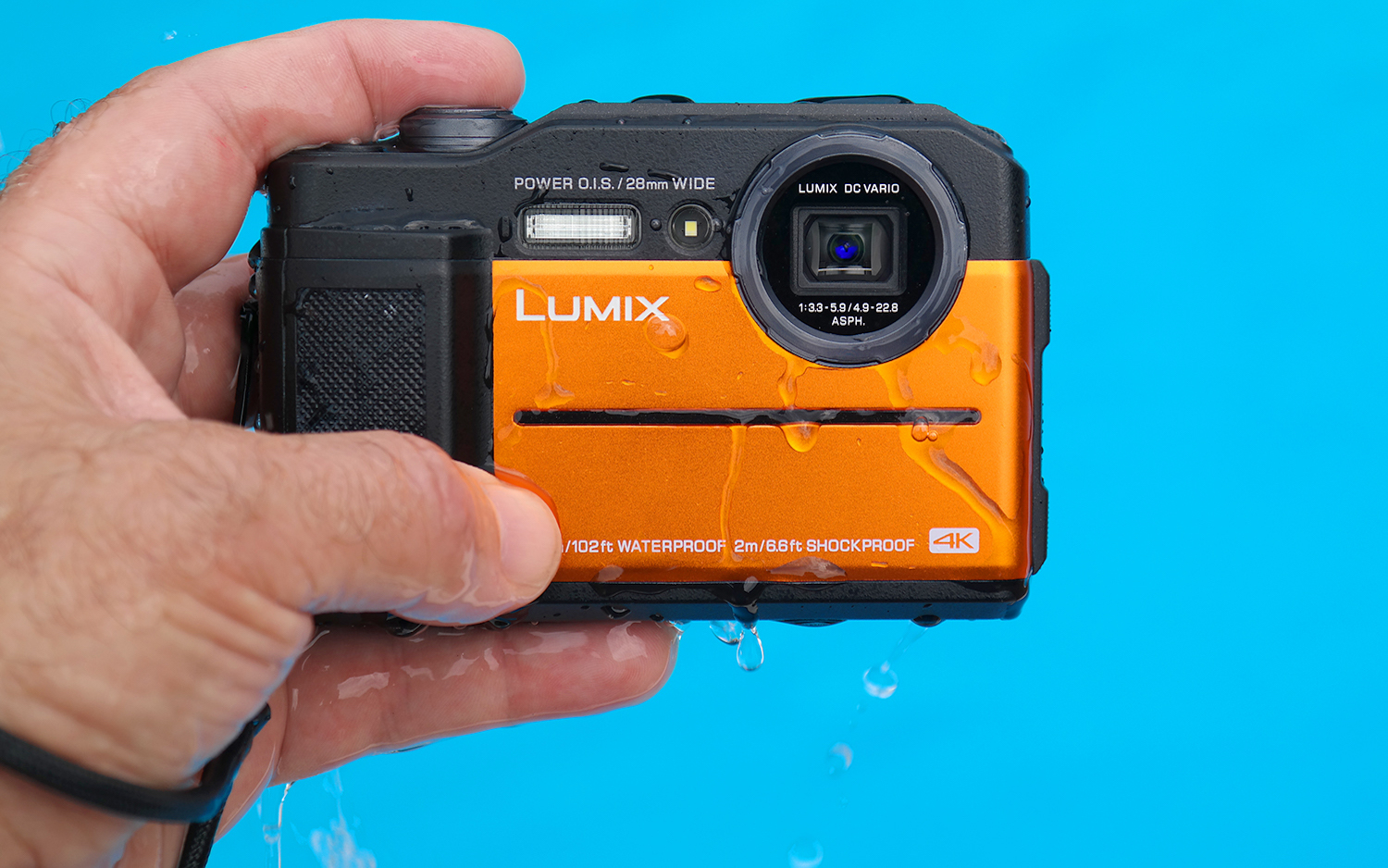Tom's Guide Verdict
Although the Lumix DC-TS7 includes an electronic viewfinder and can dive more than 100 feet underwater, it doesn't quite rise to the level of the competition.
Pros
- +
Useful electronic viewfinder
- +
Captures 4K video at 30 fps
- +
Manual exposure features
- +
Excellent waterproof locking system
- +
Claims to be waterproof to a depth of 102 feet
Cons
- -
Narrower wide angle than most
- -
Slight but noticeable shutter lag
- -
Struggles in low-light settings
- -
Bigger and heavier than others in its class
- -
Maximum apertures aren't as wide as competitors' models
Why you can trust Tom's Guide
Over the years, Panasonic has introduced a number of innovative features into its point-and-shoot cameras, including its TS series, its rugged-and-waterproof line. The company's latest, the 20.4-megapixel Lumix DC-TS7, can dive as deep as 102 feet but also includes an electronic viewfinder — unique for a tough model — that makes it more suitable for shooting above sea level.
Still, when compared with other waterproof cameras, the TS7 comes up a bit shallow. We suggest you buy the better-performing Olympus Tough TG-5 instead.
Design and Controls
The first rather conspicuous way in which the TS7 is a notch below our higher-rated rugged point and shoots is that it's larger and heavier, which in our streamlined, pared-down world is an important factor.
The Panasonic measures 4.6 x 3.0 x 1.5 inches, making it bulkier than the Nikon Coolpix W300 (4.4 x 2.6 x 1.2 inches) and the Olympus Tough TG-5 (4.5 x 2.6 x 1.3 inches). At 11.3 ounces, it's also heavier than the W300 and TG-5, which weigh 8.2 ounces and 8.8 ounces, respectively. Still, the TS7's larger size and textured grip may appeal to some shooters.
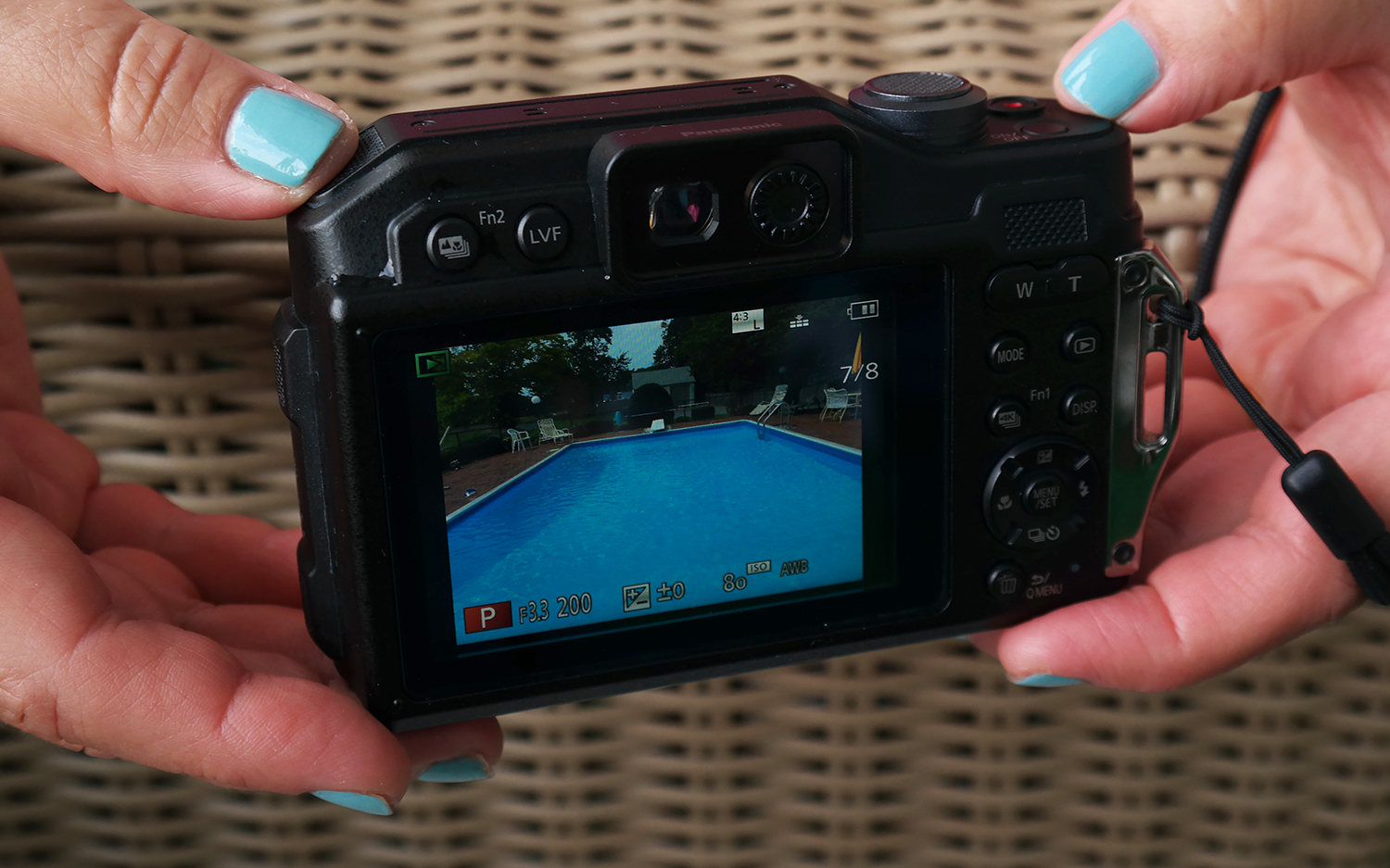
By and large, the physical controls — the buttons, dials and knobs on the top and back of the camera — worked as expected. I like the dedicated video button, which is positioned right next to the shutter button, on top of the camera. The menus could be better organized, but in general, I could access the settings I needed pretty quickly.
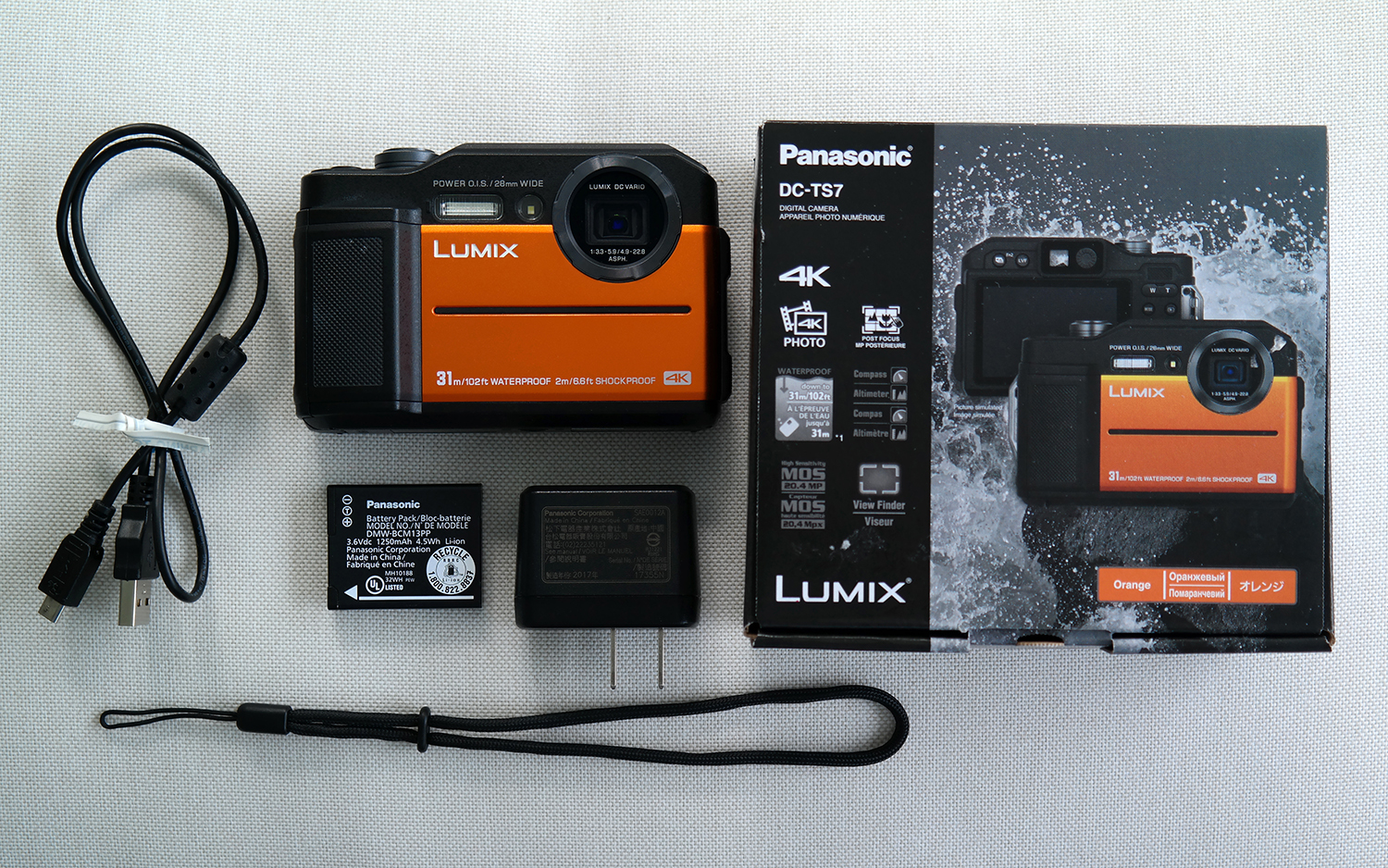
Like its competition, this Panasonic includes a two-step lock system to ensure the battery compartment is sealed when you're taking it into wet conditions. That's important, particularly if you want to take it down to its maximum rated depth of 102 feet, 2 feet farther than the Nikon Coolpix W300 and 50 feet more than the Olympus Tough TG-5. If either switch is colored red, it means the compartment door is not shut properly and isn't waterproof. I found it very easy to use — easier, in fact, than both the Olympus and Nikon systems.
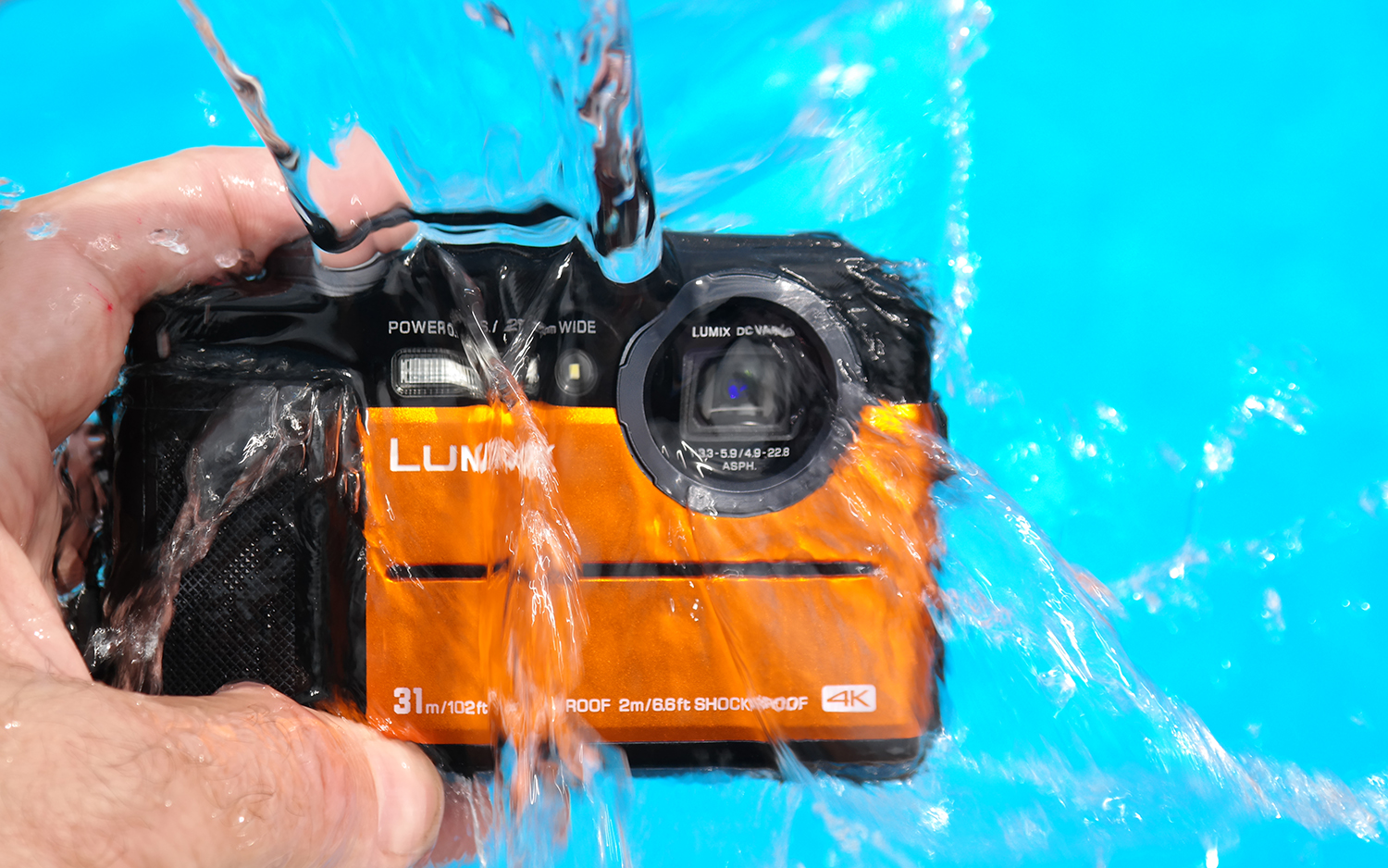
I'm happy to see the inclusion of an electronic viewfinder. Of course, it's a feature you can't really use when you're swimming in the water. But rugged-and-waterproof cameras aren't just meant to be taken into pools, lakes and oceans. They're for use on land as well, and an EVF is helpful when bright sunlight washes out your LCD and you can't compose your image or review your photo without trying to shield the LCD with your hand.
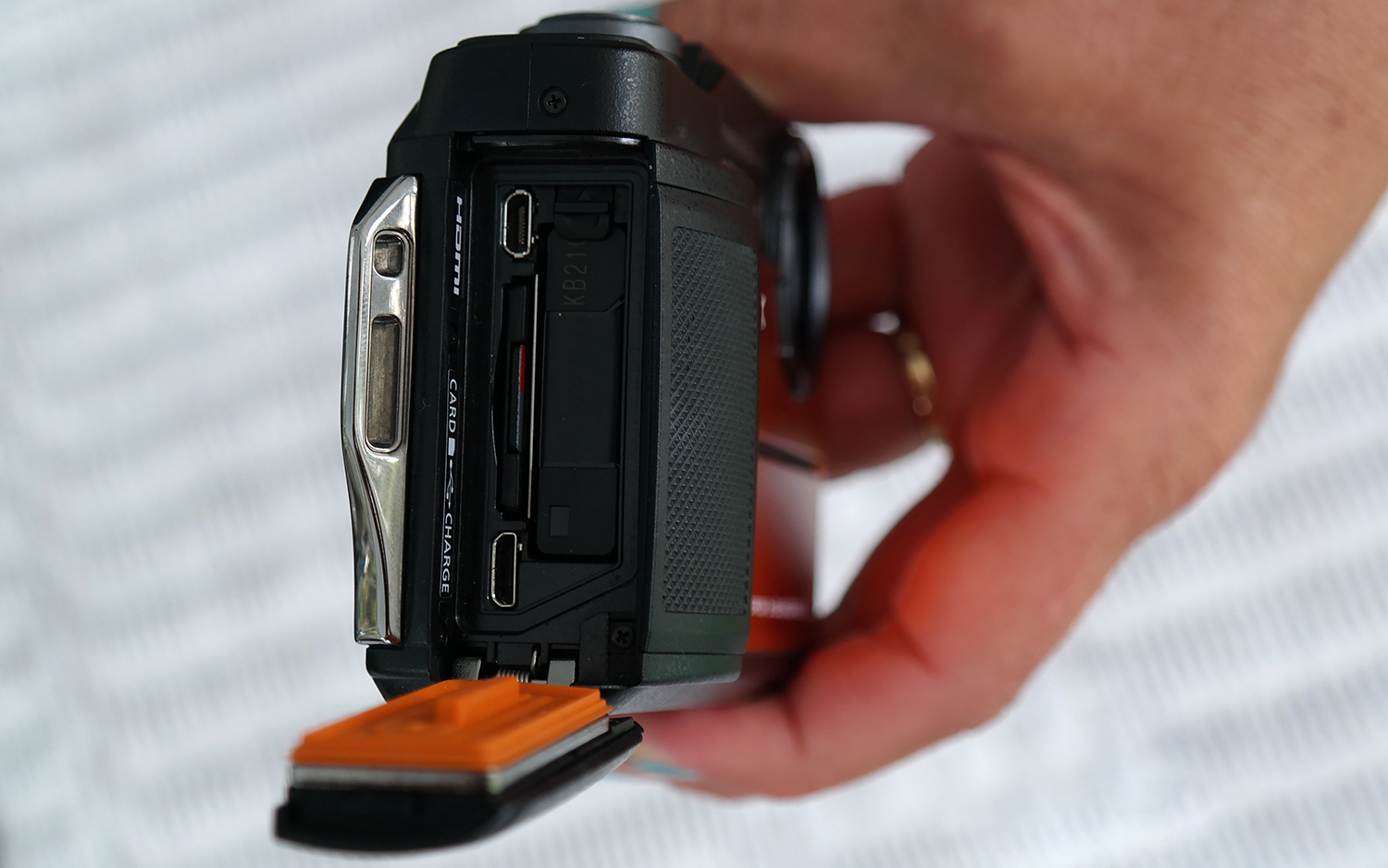
The TS7's EVF, which has a little over 1 million dots, lacks the high resolution found on advanced point and shoots, but displays a fair amount of detail and image quality when you're shooting in bright light. Where it struggles is in low light: In such settings, images in the EVF look exceptionally grainy. Yet, it's a valuable inclusion — one that sets it apart from others in its class.
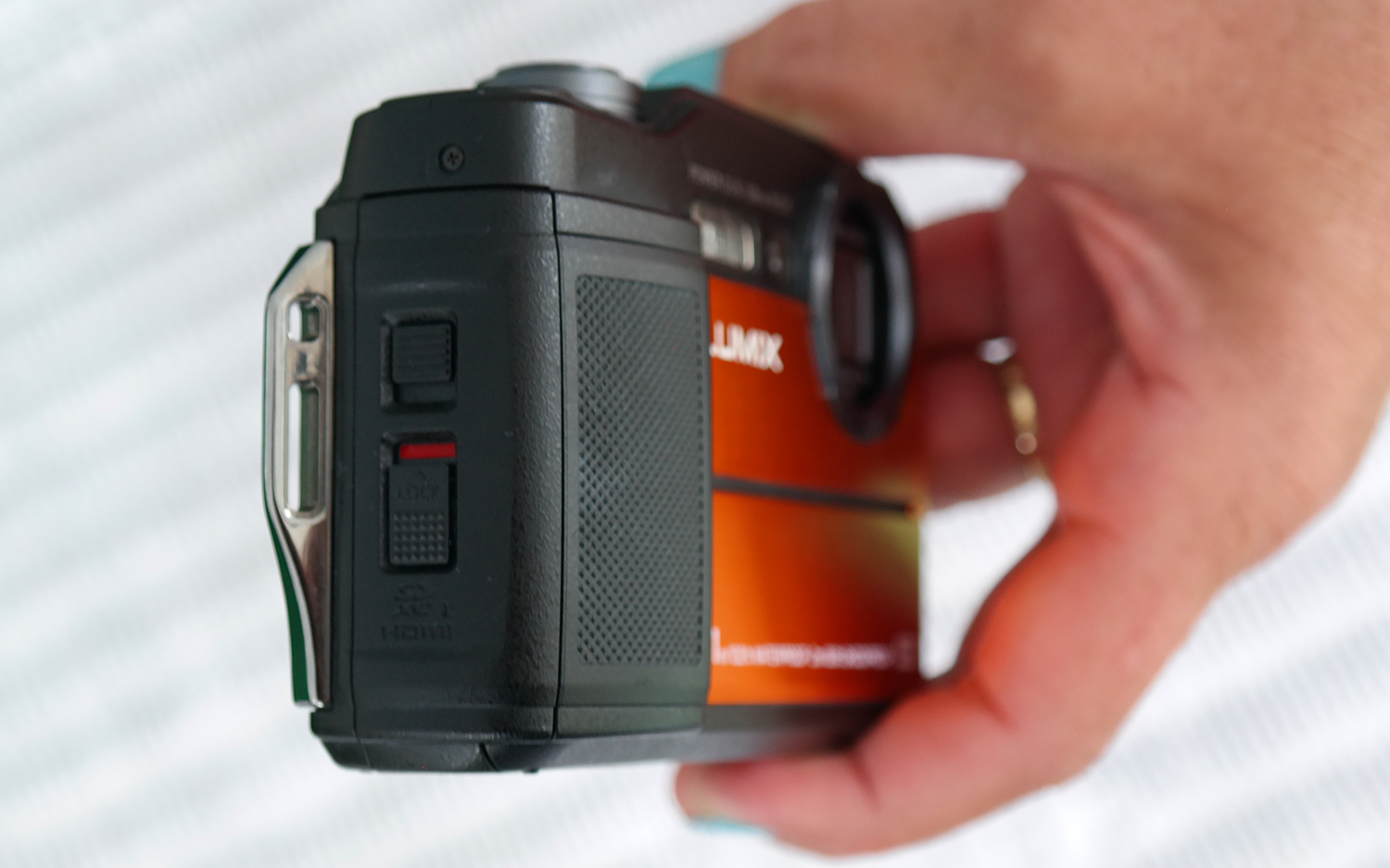
The TS7's lens comes with 4.6x optical-zoom range, between 28 and 128 millimeters (35mm film equivalent), which is similar to most rugged models. But the maximum aperture is f/3.3 to f/5.9, which isn't as wide as what you get on the TG-5 (f/2.0-4.9), which means it can't gather as much light, nor allow for shallow depth-of-field effects.
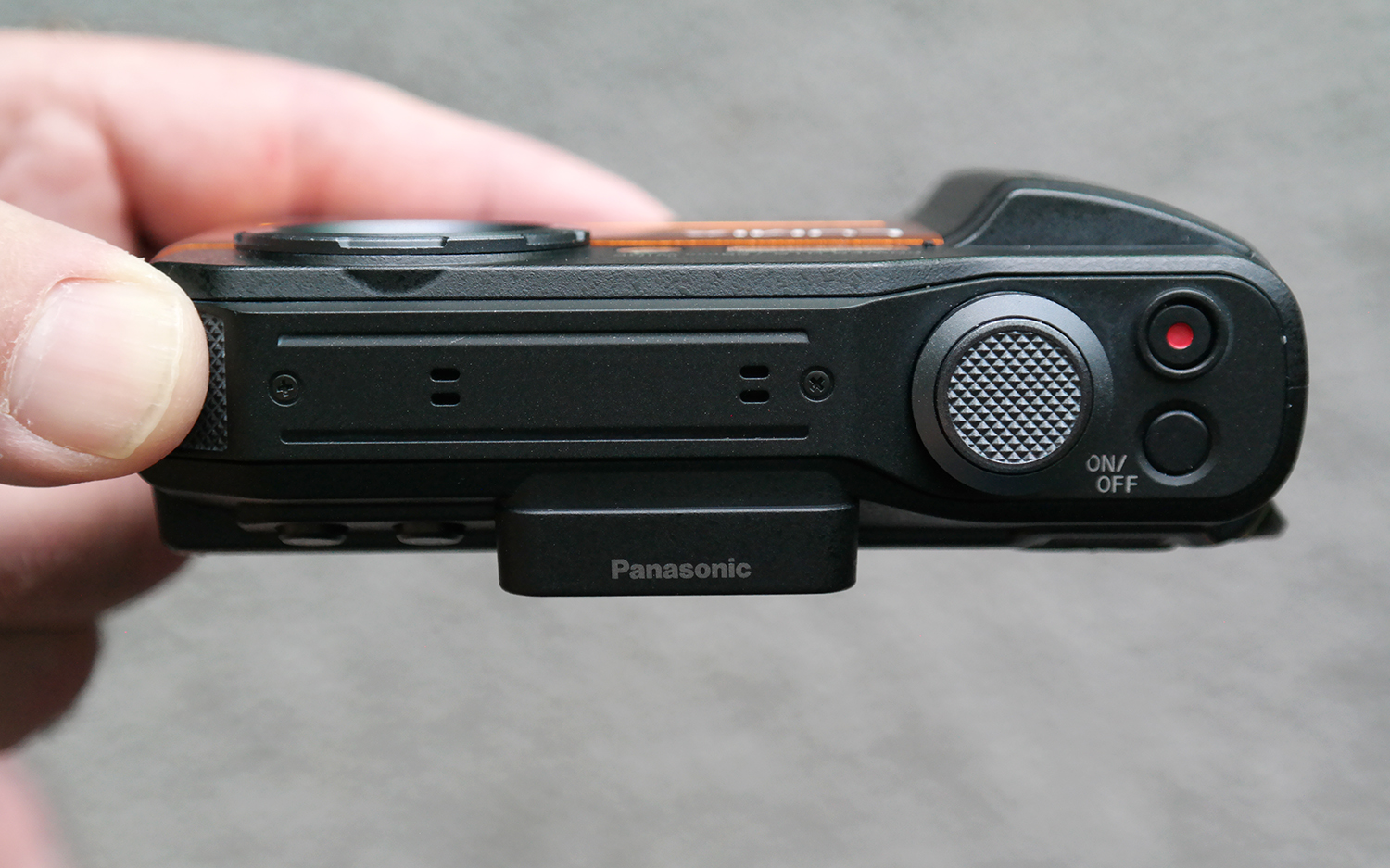
Another disappointment with the TS7's lens is that it's only 28mm at the wide-angle end of the zoom (as opposed to 24mm or 25mm). As a result, my landscapes of underwater seascapes weren't quite as expansive, and I wasn't able to include as many people in a group portrait (unless I stepped back a little).
Performance and Features
When it comes to performance and features, the TS7 is both good and bad.

Here's the bad news first: First, I don't think this camera does a very good job shooting in low light. (See image quality below for more.) Also, I found there was a slight lag in shooting photos, which means when you press down on the shutter button, the image isn't instantly captured. Instead, there's a delay, which means you could miss an important shot. Most point and shoots have very slight lag, but the lag on the TS7 is just a bit more prominent.
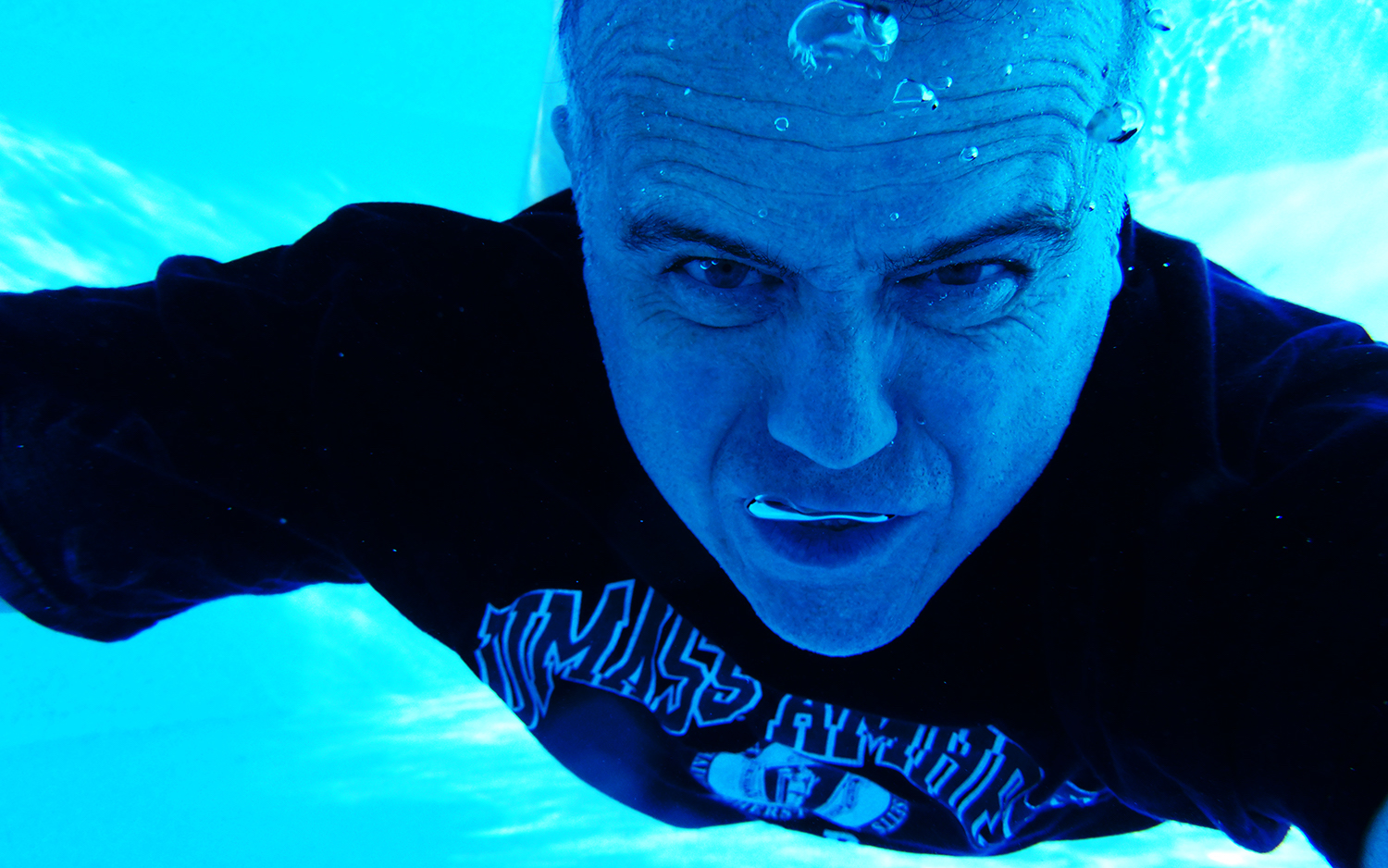
Shutter lag aside, I had a great time taking photos and video in wet and rugged terrain. It worked particularly well recently when my son and I recorded footage of both of us getting pelted by rough waves off a Long Island beach one summer day.
I had no problems switching modes and alternating between capturing photos and video. I particularly enjoyed using the slow-motion features — it shoots 1280 x 720 video clips up to 120 frames per second — which adds an extra element of drama to your video clips.
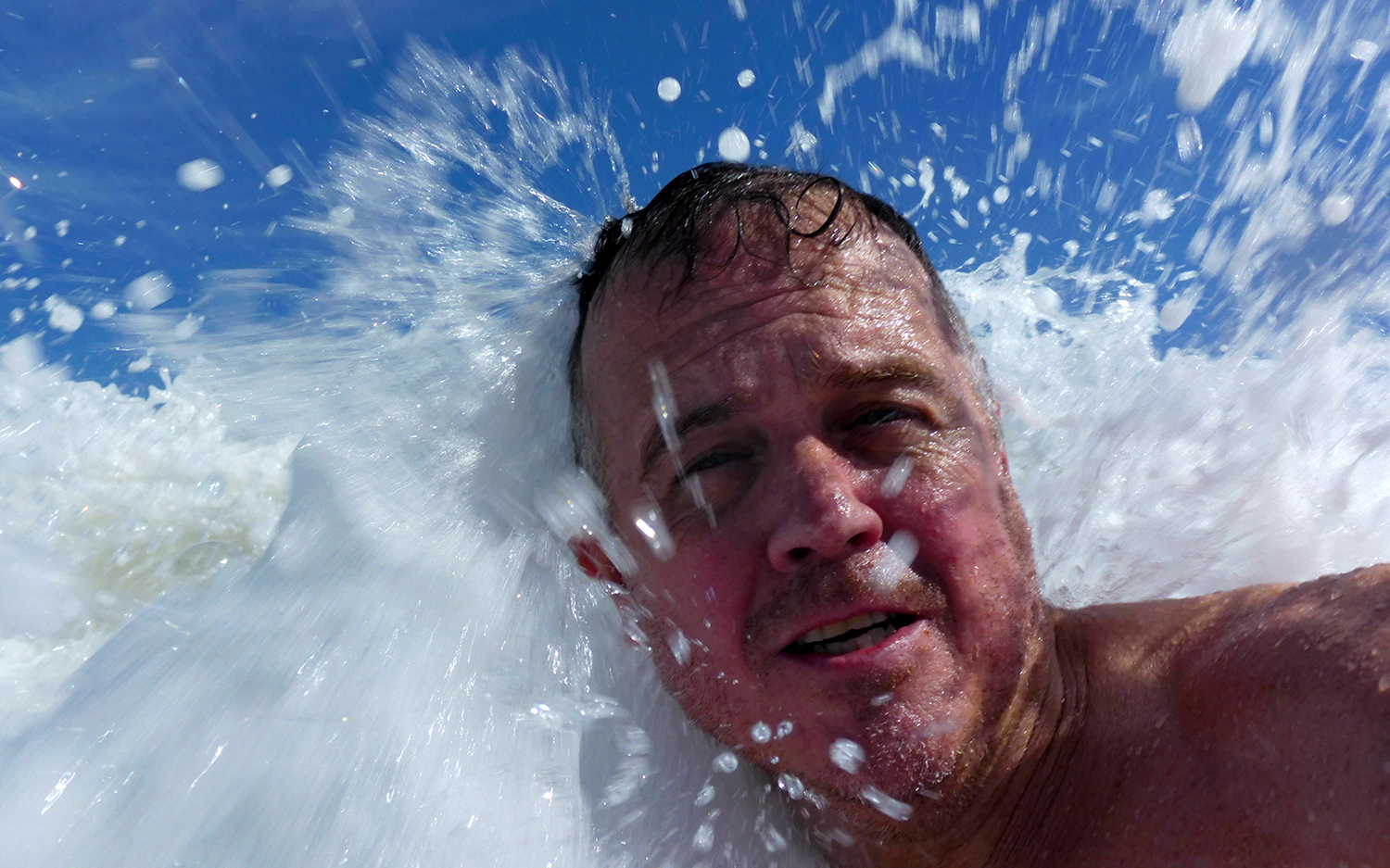
Overall, the camera offers a fair number of scene modes for shooting photos. It would have been nice, though, to have some scene modes for video settings.
It can fire off lots of shots: 10 fps at full resolution. The TS7 also has the same Post Focus mode found on the Lumix ZS200, a travel superzoom point and shoot.
MORE: GoPro Hero6 Review: The Best Action Camera
As for ISO and built-in flash settings, the TS7 is adequate but falls shy of what you get on the TG-5. The ISO sensitivity range is 80 to 3,200 on the TS7, but that can be expanded to 6,400. By comparison, the TG-5 gives you an ISO range of 100 to12,800.
Image Quality
The TS7 captures video and photos on a 20.4-MP MOS sensor. Image quality in bright light is good, although in my test shot, I found details at the edges to be a tad soft. Overall, it has very good dynamic range — the darkest tones could have been even darker — but by and large, the tonal range was solid in bright light.

But in low light, the TS7 struggles with sharpness. While it did do an adequate job with dynamic range, most subject matter lost focus and character. Additionally, unlike the TG-5, the TS7 can't shoot RAW files, which can improve some of your low-light shots.

Overall, the camera did a decent job shooting photos and video underwater. As with most underwater cameras, you begin to lose available light pretty quickly, in even just a few feet of water, which means you'll generally not have any true white tone or very bright highlights and some of the colors will be less vibrant.
In my test shots of brightly colored children's toys, you can see that the tones are a bit darker and there's a tad less saturation in the colors. But overall, there's not much color shift in the image.
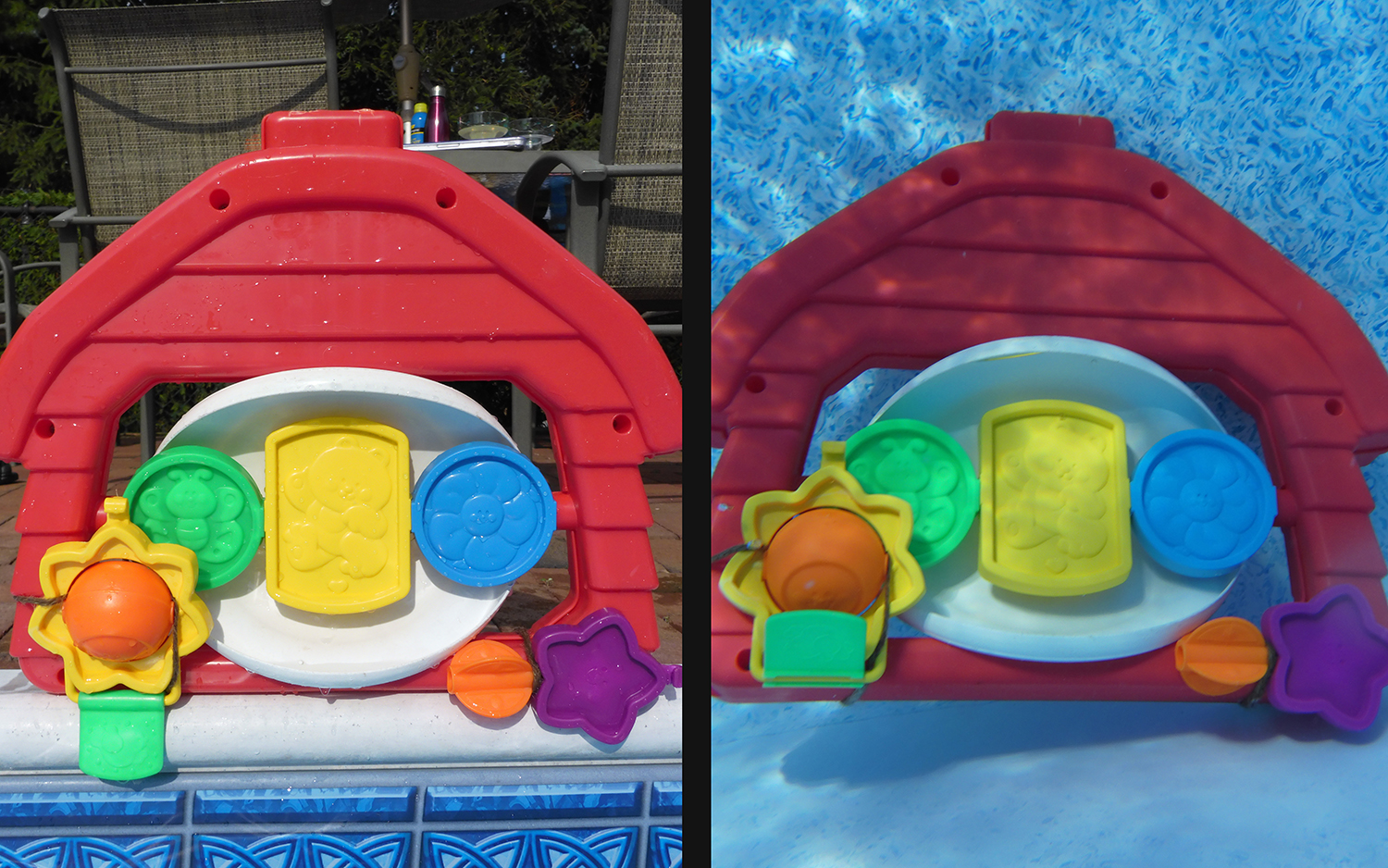
When shooting shots by the ocean in bright light, the photos were predictably sharper and crisper, and I found that shooting in burst was very effective. For example, just before I was hit by a large wave, I fired off multiple shots in the TS7's burst mode, which can capture as many as 10 fps and caught the exact moment I was hit.
However, because you'll generally need a slower shutter speed because of the low-light environment, you'll blur fine details and edges will be softer and not as crisp. That's the advantage of the TG-5's larger maximum-aperture range.
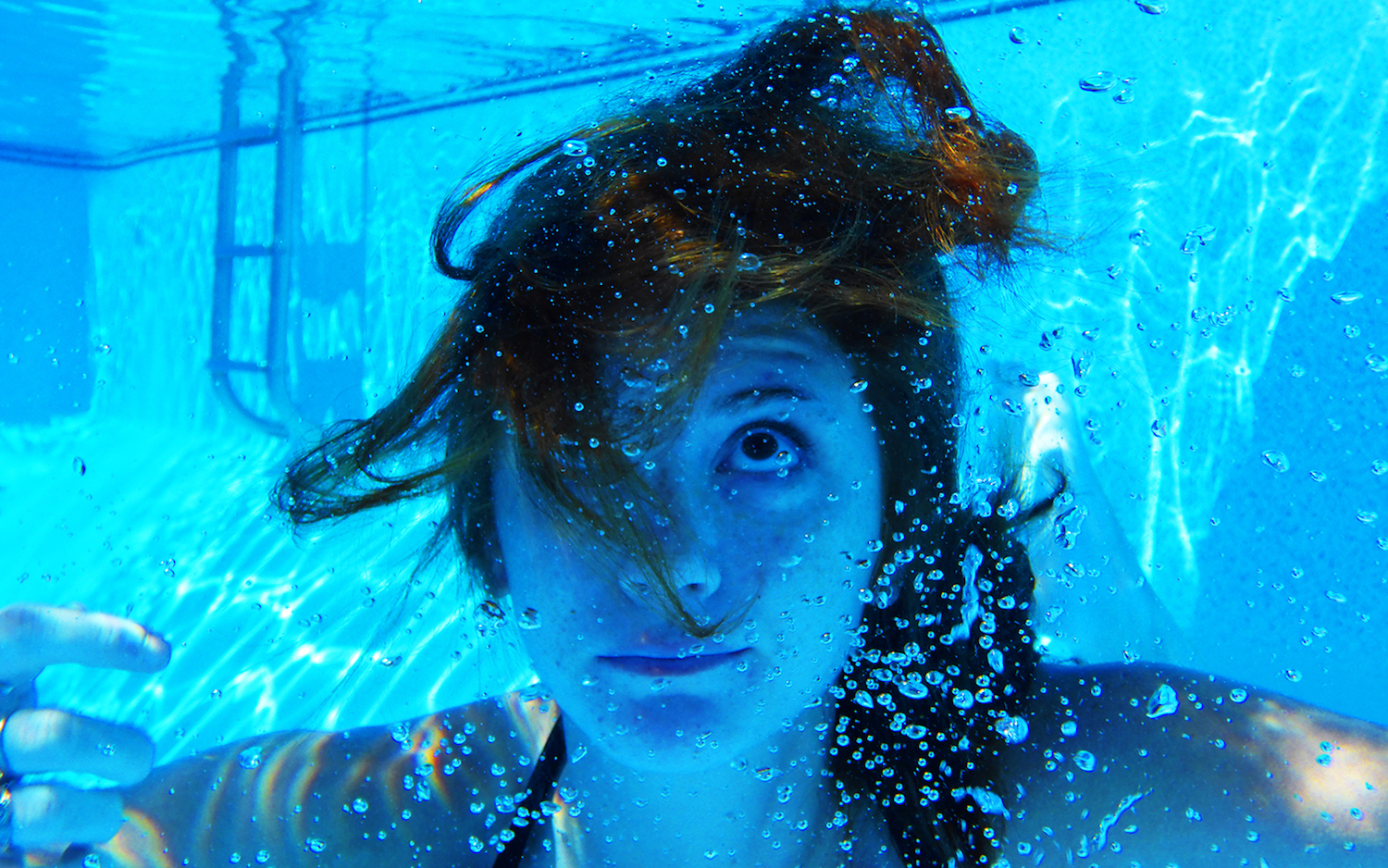
You can take flash shots underwater, as well, which improves lighting when you're close to the subject. However, unlike the Olympus TG-5, you can't adjust the output of the flash (via a flash exposure compensation setting), which means you're limited to the fixed settings provided by Panasonic.
Video Quality
While I wasn't overly impressed with this camera's still-photo performance, particularly in low light, the TS7 performed very well capturing video. The video button is easy to find — it's located right next to the shutter button. In HD at 60 fps, it provided smooth footage and quickly responded to changes in lighting. In 4K, which can capture video at 30 fps, it also performed well.
As I noted above, the camera does a very good job shooting underwater, whether in a pool or the ocean. Just be sure to use the strap, particularly in the ocean, so you don't lose your camera.
The slow-motion features (turned on in the menu settings) worked very well, as did the time-lapse settings, which let you compress time and allow you to "speed up" time, so that a sun setting during the course of a half hour will take just 10 seconds in your video clip. The slow-motion features have just one setting (720p at 120 fps), but you can manually select many time-lapse settings.
Wireless Sharing
Just like the Lumix ZS200, I found it very easy to use Panasonic's wireless mobile app, the Panasonic Image App (which I set up using my iPhone 7), with the TS7. The app was intuitive, and it took me just a few moments to initiate the connection to my phone. Again, I found it very simple to quickly get the camera up and running and remotely control it from my phone or transfer a photo or a video to my iPhone.
Battery Life
Panasonic claims the DC-TS7 will last 300 shots per charge (according to the CIPA standard), which is less than the Olympus TG-5 (340 shots per charge) but longer than the Nikon Coolpix W300, which claims just 280 shots per charge.
Bottom Line
The Panasonic Lumix DC-TS7 has a number of unique features — particularly its electronic viewfinder — that might make it an enticing rugged-and-waterproof point-and-shoot camera for some. We also like that you can take it as deep as 102 feet, which should be more than enough for most water activities. But its shortcomings, such as its mediocre image quality in low light and shutter lag, keep it from effectively competing. For the money, we prefer the Olympus Tough TG-5 and the Nikon Coolpix W300, both of which cost about $100 less.
Credit: Terry Sullivan/Tom's Guide
Terry Sullivan is an experienced technology journalist who has covered consumer electronics including cameras, smartphones, audio tech and software among many other things. His work has appeared in the likes of Consumer Reports, PCMag, Lifehacker, and the New York Times and he is also a teacher, photographer, artist, and musician.
